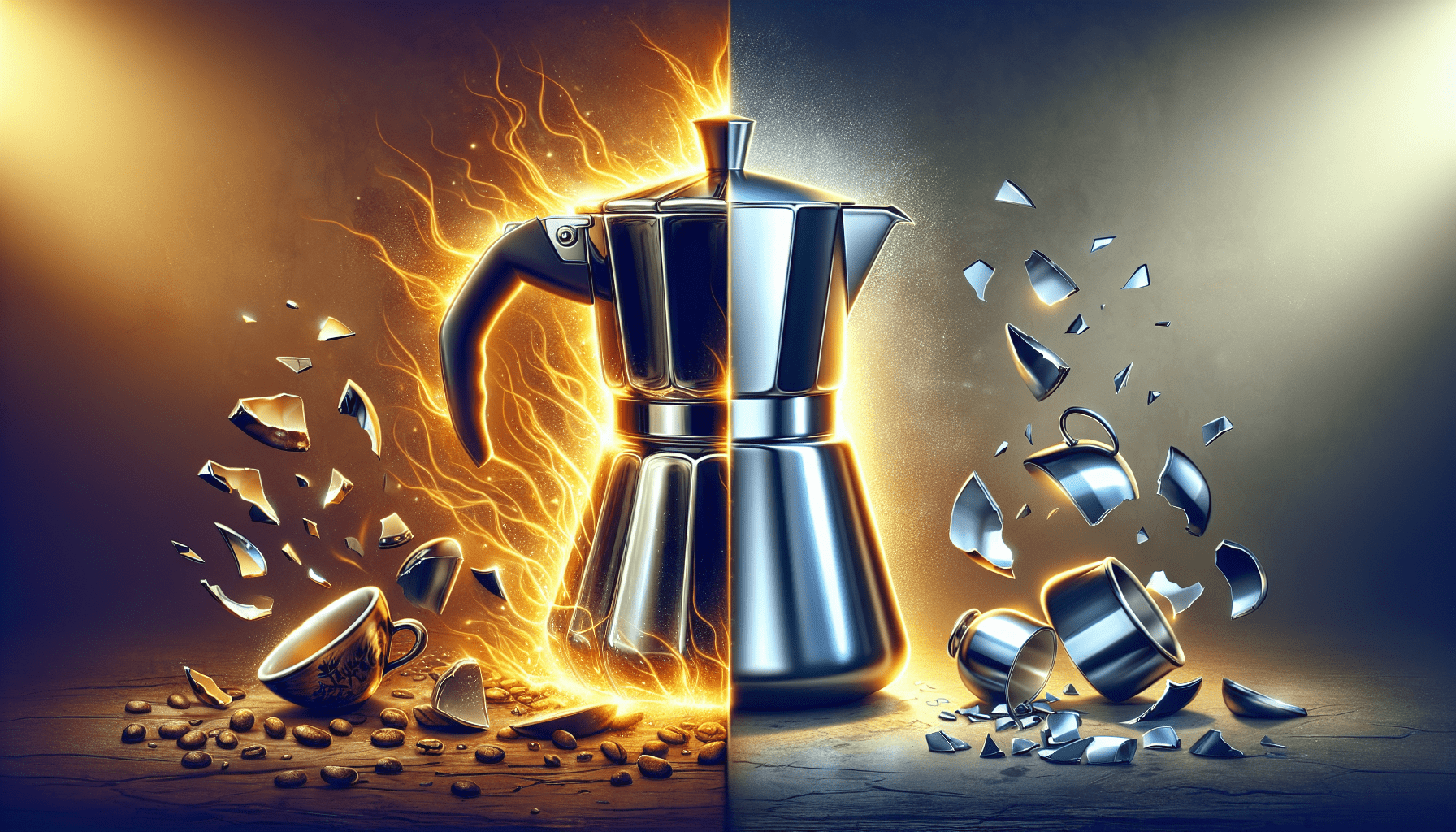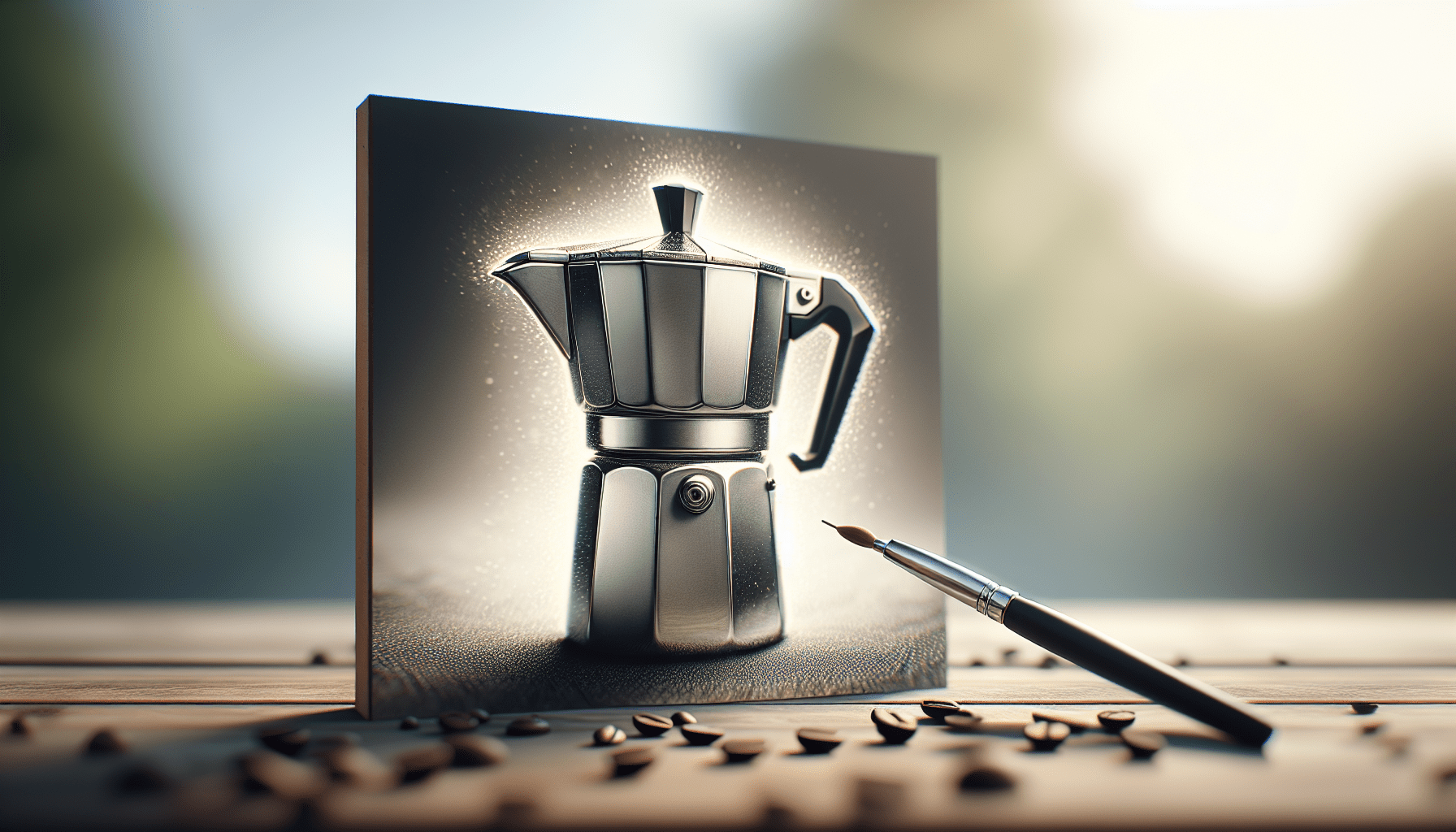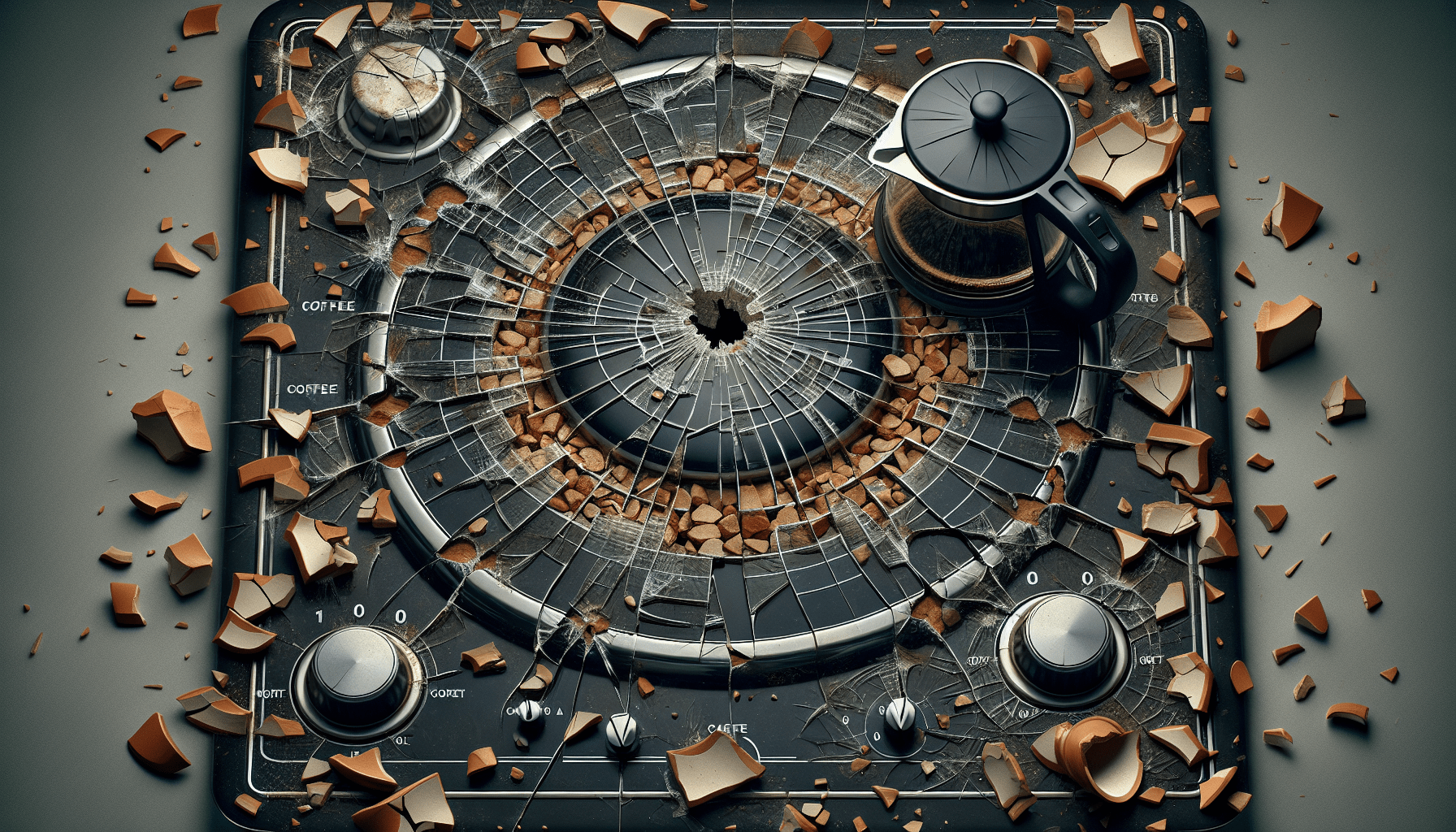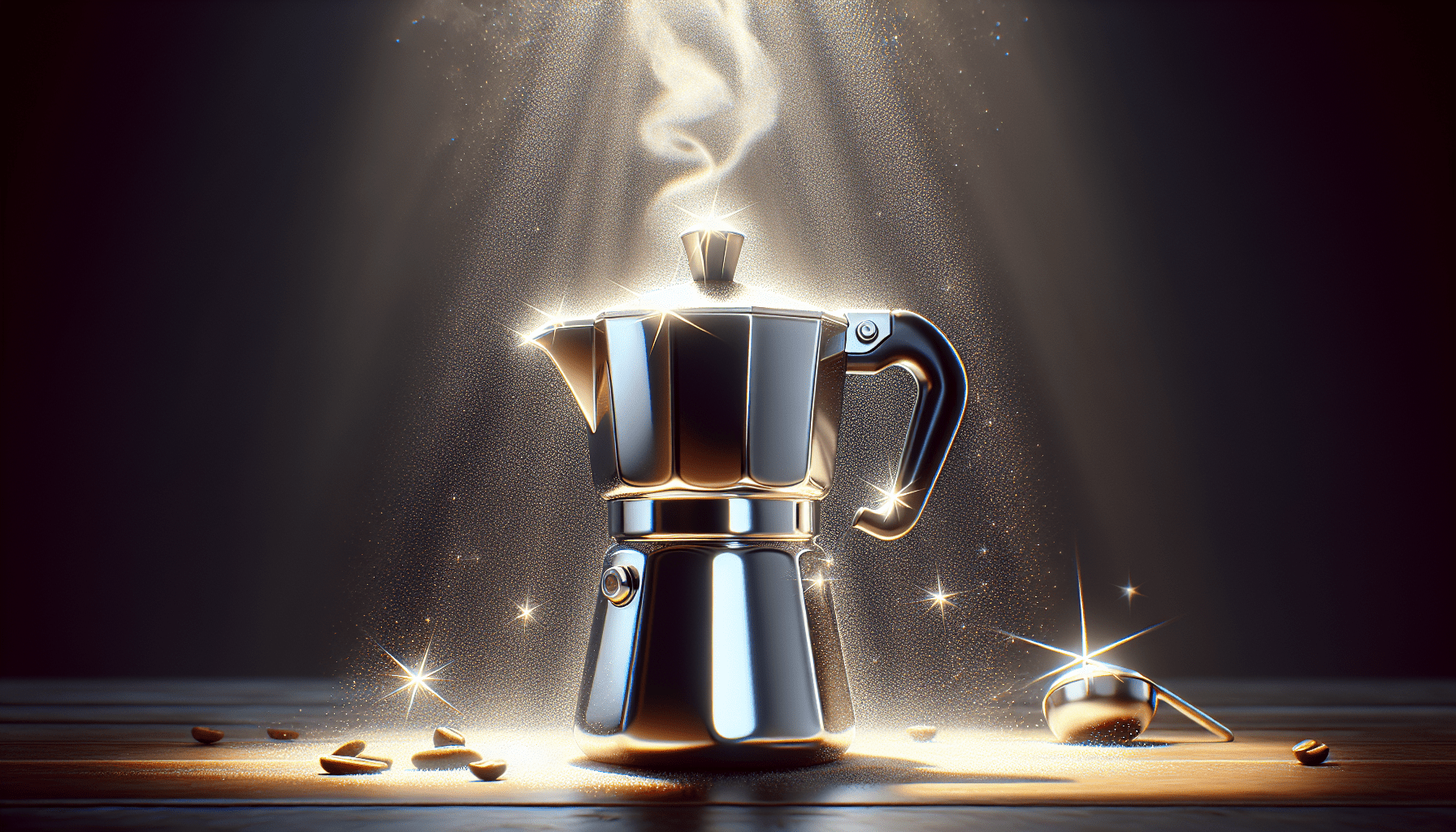If you’re someone who enjoys waking up to the aroma of freshly brewed coffee, then the question of whether glass coffee pots are superior to stainless steel ones has probably crossed your mind. Both options have their own unique strengths and weaknesses, and choosing between them can be quite a dilemma. In this article, we will explore the benefits and drawbacks of glass coffee pots and stainless steel ones, helping you make an informed decision on which one is best suited for your daily caffeine fix. So grab a cup of joe, sit back, and let’s weigh the pros and cons of these two popular brewing vessel options.
Heat Retention
Glass coffee pots have poor heat retention
Glass coffee pots are known for their poor heat retention capabilities. The material does not offer adequate insulation, leading to a rapid loss of heat once the coffee is brewed. As a result, if you choose to brew your coffee in a glass pot, it is essential to serve it immediately to prevent heat loss. This can be inconvenient if you are serving a large group or prefer to savor your coffee over an extended period.
Stainless steel coffee pots have excellent heat retention
On the other hand, stainless steel coffee pots excel in heat retention. The durable material acts as an effective thermal insulator, keeping your brewed coffee hot for a more extended period. This makes stainless steel pots a great choice for individuals who enjoy leisurely coffee-drinking sessions or those who often entertain guests and need their coffee to stay hot for longer durations.
Glass pots require immediate serving to prevent heat loss
Glass pots, due to their poor heat retention, require immediate serving to prevent significant heat loss. This means that you may need to rush to serve your coffee as soon as it finishes brewing to ensure it is still hot when you drink it. This time constraint may not be convenient for everyone, especially those who prefer to enjoy their coffee at a relaxed pace.
Durability
Glass coffee pots are prone to breakage
When it comes to durability, glass coffee pots are more vulnerable to breakage compared to their stainless steel counterparts. The fragility of glass puts these coffee pots at a higher risk of shattering or cracking, especially if accidentally dropped or mishandled. This fragility can be a concern for individuals with young children or those who tend to be clumsy in the kitchen.
Stainless steel coffee pots are more durable
In contrast, stainless steel coffee pots are renowned for their durability. The sturdy material is resistant to breakage, making stainless steel pots less susceptible to accidental damage or wear and tear. This durability factor allows you to use a stainless steel pot with peace of mind, knowing that it can withstand the rigors of daily use without the fear of it breaking and rendering it unusable.
Glass pots require careful handling
Due to their fragile nature, glass coffee pots require careful handling. You must take precautions while using and washing glass pots to avoid any accidental breakage. This includes being cautious when stirring or pouring liquids, as well as using gentle cleaning techniques to prevent any chips or cracks in the glass. The need for extra care and attention when dealing with glass pots can be a drawback for those seeking a low-maintenance and hassle-free coffee brewing experience.
Ease of Cleaning
Glass coffee pots are easier to clean
When it comes to ease of cleaning, glass coffee pots take the lead. Glass is a non-porous material, which means that stains and odors from coffee are less likely to adhere to its surface. This makes glass pots easy to clean, as most coffee residue can be easily rinsed away with warm water and mild dish soap. Additionally, the transparency of glass allows you to see any remaining stains, enabling you to ensure the pot is thoroughly cleaned before your next brew.
Stainless steel coffee pots require more effort to clean
On the other hand, stainless steel coffee pots require a bit more effort to clean. The smooth surface of stainless steel can attract coffee stains and odors, making it necessary to put in additional elbow grease to remove any lingering residue. Often, stainless steel pots will require more than just a simple rinse to achieve a sparkling clean appearance. However, with the right cleaning products and techniques, you can maintain the cleanliness of a stainless steel pot and keep it looking as good as new.
Glass pots do not retain stains or odors
One advantage of glass coffee pots is their ability to resist staining and retaining odors. Unlike stainless steel pots, the non-porous nature of glass prevents coffee oils from penetrating its surface. This means that you won’t have to worry about your coffee pot absorbing any unwanted flavors or smells, ensuring that each brew is fresh and untainted.
Visibility
Glass coffee pots allow you to see the brewing process
One unique feature of glass coffee pots is their ability to provide visibility during the brewing process. Watching the coffee grounds interact with hot water and witnessing the extraction process can be an enjoyable and educational experience for coffee enthusiasts. Glass pots allow you to observe the bloom, see the color change, and gauge the strength of your coffee as it brews.
Stainless steel coffee pots do not offer visibility
In contrast, stainless steel coffee pots do not offer visibility into the brewing process. The opaque nature of the material prevents you from seeing the coffee as it progresses through its various stages, making it more difficult to judge factors such as strength and extraction. This lack of visibility can be a drawback for those who take pride in closely monitoring their coffee brewing and adjusting variables to achieve the perfect cup.
Glass pots can help monitor coffee strength and extraction
The transparency of glass coffee pots enables you to monitor coffee strength and extraction more effectively. By observing the color and density of the brewed coffee, you can make adjustments to achieve your desired taste. This feature is especially valuable for coffee lovers who enjoy experimenting with different brew ratios and techniques to achieve the perfect cup.
Aesthetics
Glass coffee pots have a classic and elegant look
Glass coffee pots are often prized for their classic and elegant appearance. The clear, transparent material adds a touch of sophistication to any coffee station or dining table. Glass pots have a timeless appeal and can easily blend in with various kitchen styles and aesthetics.
Stainless steel coffee pots have a modern and sleek appearance
In contrast, stainless steel coffee pots offer a more modern and sleek aesthetic. The shiny, reflective surface of stainless steel adds a contemporary touch to any kitchen or coffee setup. This sleek appearance can complement modern kitchen designs and create a sense of modernity and sophistication.
Glass pots can enhance the visual appeal of a coffee station
Glass coffee pots can enhance the visual appeal of a coffee station or countertop. The transparency of the pot allows the rich, dark color of the brewed coffee to be showcased, creating an inviting and enticing display. Whether you prefer a traditional or modern look, a glass pot can be a stylish addition to your coffee setup, instantly elevating its overall aesthetic appeal.
Price Range
Glass coffee pots tend to be more affordable
When it comes to price, glass coffee pots are generally more affordable compared to stainless steel ones. The cost of manufacturing glass pots is often lower, making them a budget-friendly option for individuals seeking an economical coffee brewing solution. This affordability can be particularly appealing for coffee enthusiasts on a tight budget or those who are just starting their coffee brewing journey.
Stainless steel coffee pots are generally more expensive
On the other hand, stainless steel coffee pots are generally more expensive than their glass counterparts. The higher cost of the materials, as well as the manufacturing process, contributes to the increased price tag of stainless steel pots. However, it’s important to consider the long-term durability and potential lifespan of stainless steel pots, as they may prove to be a worthwhile investment in the long run.
Glass pots are a budget-friendly option
Glass coffee pots, with their lower price point, are an excellent choice for budget-conscious coffee lovers. They offer a cost-effective option for individuals who want a reliable coffee brewer without breaking the bank. Additionally, the affordability of glass pots allows you to allocate your coffee budget towards high-quality beans or other coffee accessories that can further enhance your brewing experience.
Temperature Control
Glass coffee pots have limited temperature control
Glass coffee pots have limitations when it comes to temperature control. Due to their poor heat retention properties, the coffee temperature can quickly drop once it is brewed. This rapid cooling can be undesirable for individuals who prefer their coffee to stay hot for an extended period. It is important to note that while glass pots may not excel in temperature control, they can still maintain a satisfactory coffee temperature for immediate consumption.
Stainless steel coffee pots provide better insulation
In contrast, stainless steel coffee pots provide better insulation and temperature control. The material’s ability to retain heat helps keep your freshly brewed coffee hot for a more extended period. This can be particularly advantageous for individuals who enjoy leisurely coffee-drinking sessions or for those busy mornings when you need your coffee to stay piping hot as you go about your morning routine.
Glass pots may lead to faster cooling of coffee
While glass coffee pots do not excel in temperature control, they can lead to faster cooling of coffee due to their poor heat retention capabilities. This can be a drawback for those who prefer to savor their coffee or enjoy a hot cup throughout the morning. However, if you plan to drink your coffee immediately after brewing or regularly monitor the pot’s temperature to reheat if necessary, the rapid cooling factor may not be a significant concern.
Portability
Glass coffee pots are fragile and less portable
When it comes to portability, glass coffee pots fall short due to their fragile nature. The risk of breakage during transport makes them less suitable for on-the-go or travel scenarios. Additionally, glass pots tend to be heavier than their stainless steel counterparts, further diminishing their portability compared to more lightweight options.
Stainless steel coffee pots are more travel-friendly
Stainless steel coffee pots, with their durability and lightweight design, are significantly more travel-friendly compared to glass pots. The robustness of stainless steel allows these pots to withstand the rigors of travel without the fear of breakage. Whether you are camping, going on a road trip, or simply need a portable coffee solution, a stainless steel pot can be a reliable companion for all your coffee adventures.
Glass pots are not suitable for outdoor use
Due to their fragility and limited temperature control, glass coffee pots are not the ideal choice for outdoor use. The risk of breakage is higher in an outdoor environment, where accidental bumps or drops are more likely to occur. Additionally, the poor heat retention of glass pots may make it challenging to keep your coffee hot during outdoor activities. If you plan to brew coffee while enjoying the great outdoors, a more durable and insulating option, such as a stainless steel pot, would be more suitable.
Maintenance
Glass coffee pots require more maintenance
Glass coffee pots typically require more maintenance compared to stainless steel ones. Due to their fragility, glass pots need to be handled with care, and special attention must be given during cleaning to prevent any accidental damage. Regular inspection for chips or cracks is necessary, as even small imperfections can compromise the integrity of the pot. Additionally, extra caution should be exercised while stirring or pouring to avoid any accidental breakage.
Stainless steel coffee pots are low maintenance
Stainless steel coffee pots, on the other hand, are known for their low maintenance requirements. The material’s durability allows for worry-free use and cleaning. Stainless steel pots can generally withstand more rigorous washing techniques without the risk of damage, making them a convenient choice for individuals seeking a hassle-free coffee brewing experience.
Glass pots may need replacement parts over time
Glass coffee pots may require replacement parts over time, particularly if any cracks or chips develop. The fragility of the material makes it vulnerable to damage, and even with careful handling, accidents can happen. It is essential to have spare parts readily available, such as replacement carafes, to ensure the longevity of your glass coffee pot. However, the availability and cost of these replacement parts can vary depending on the specific model and brand of your pot.
Impact on Taste
Glass coffee pots do not alter the taste of coffee
Glass coffee pots are favored by many coffee enthusiasts as they do not alter the taste of the brewed coffee. The non-porous nature of glass ensures that no unwanted flavors or odors are imparted to the coffee. This allows you to enjoy the pure and unadulterated flavors of your carefully chosen coffee beans without any interference from the brewing vessel.
Stainless steel coffee pots can impart a metallic taste
Stainless steel coffee pots, on the other hand, have the potential to impart a metallic taste to the brewed coffee. This is particularly true if the pot is of lower quality or not properly cleaned. The stainless steel material can interact with the coffee and result in an undesirable metallic aftertaste. While stainless steel pots from reputable brands and with proper cleaning may not significantly impact the taste, it is still a factor to consider for those who prioritize the purity of flavor.
Glass pots are preferred by enthusiasts for pure flavor
The lack of flavor interference in glass coffee pots makes them a preferred choice for coffee enthusiasts who value the purity of flavor. By using a glass pot, you can fully appreciate the nuanced flavors and aromas that your coffee beans have to offer. This is especially important for individuals who invest in premium or specialty coffee beans and want to experience their unique characteristics to the fullest extent.
In conclusion, the choice between a glass coffee pot and a stainless steel one depends on your personal preferences and needs. Glass pots offer easier cleaning, a classic look, and do not alter the taste of coffee, but they lack heat retention and durability. On the other hand, stainless steel pots excel in heat retention, durability, and portability, but require more effort for cleaning and can potentially impart a metallic taste. Consider your priorities in terms of heat retention, aesthetics, maintenance, and taste to make an informed decision about which type of coffee pot suits you best.




